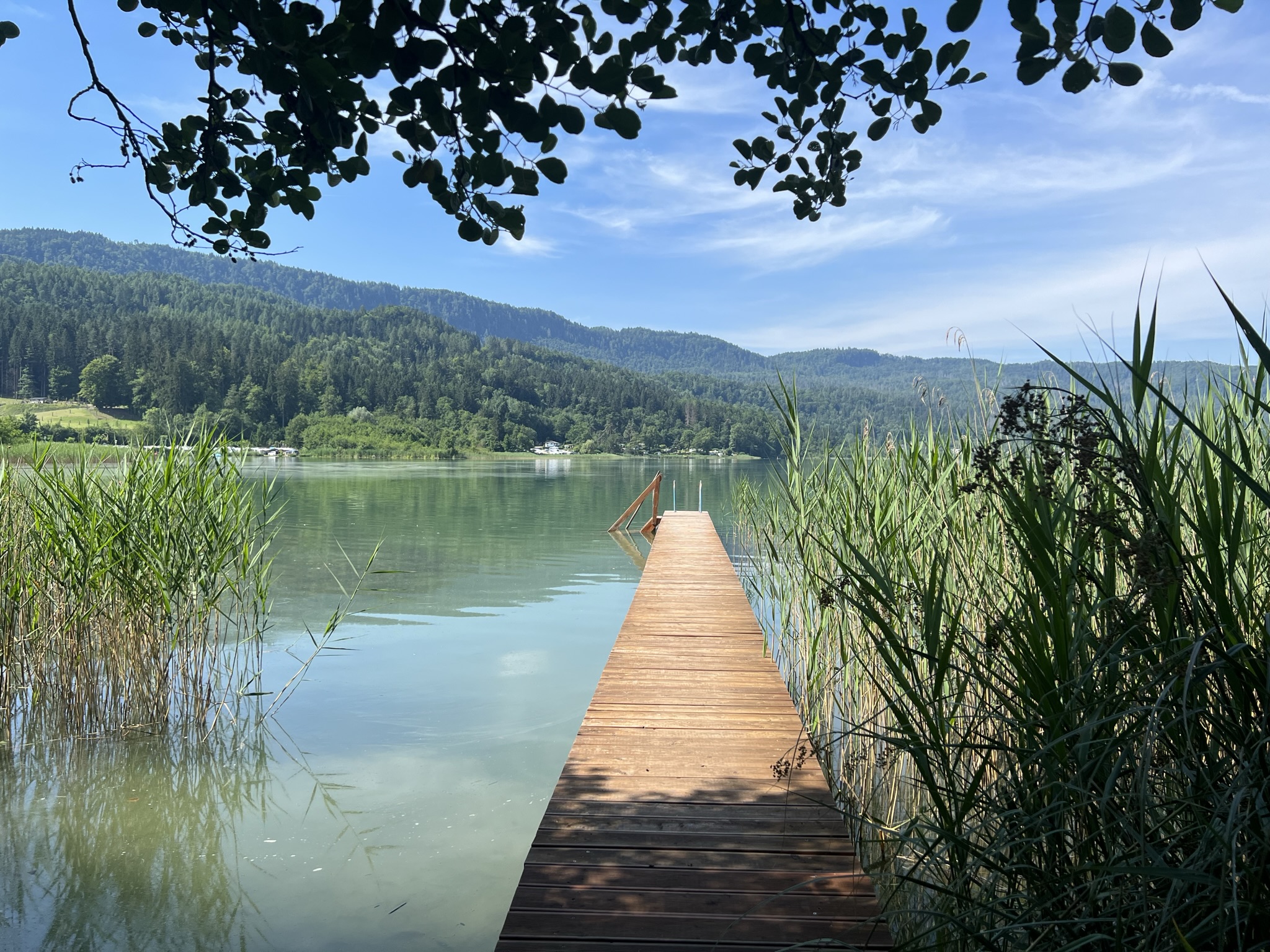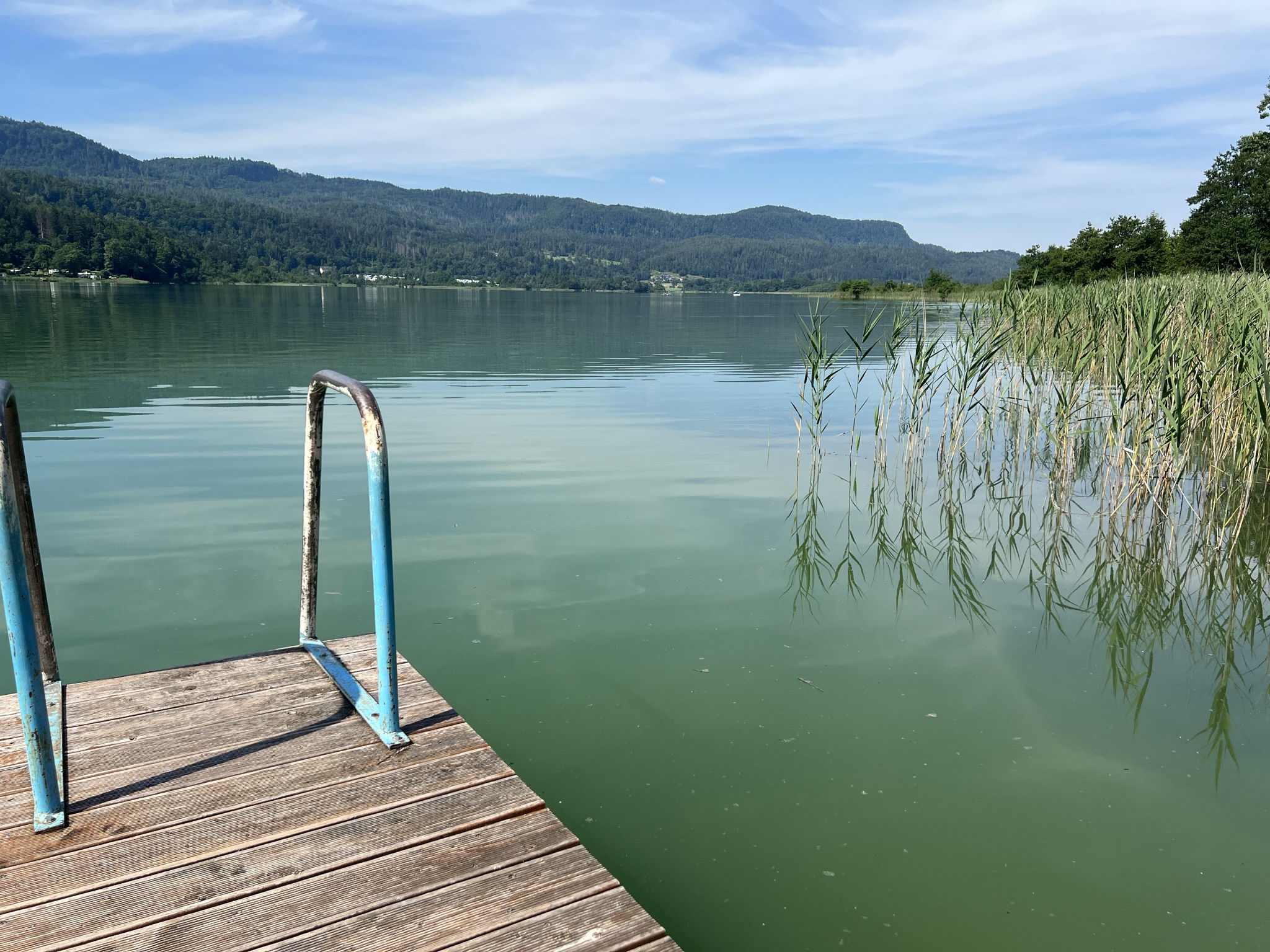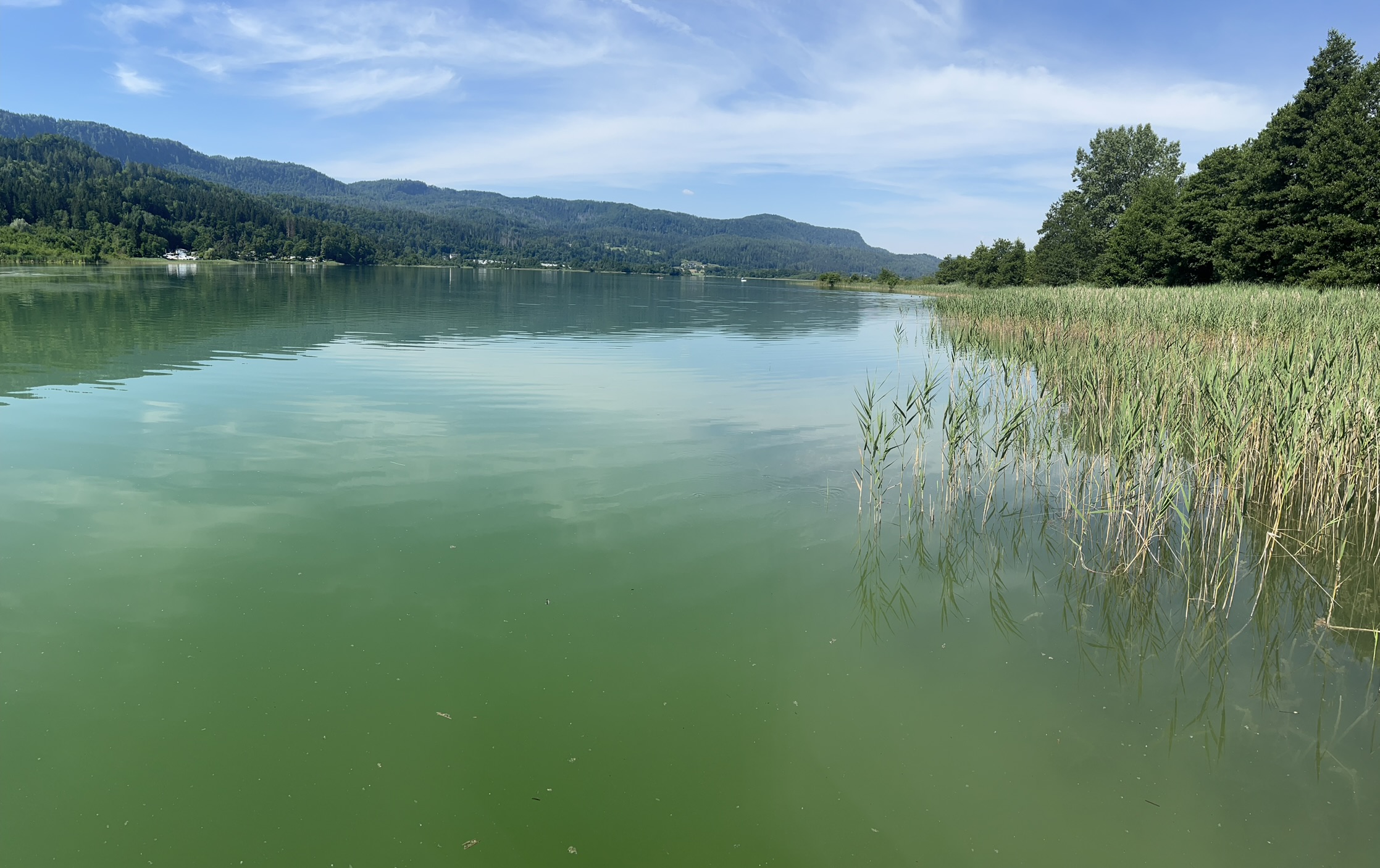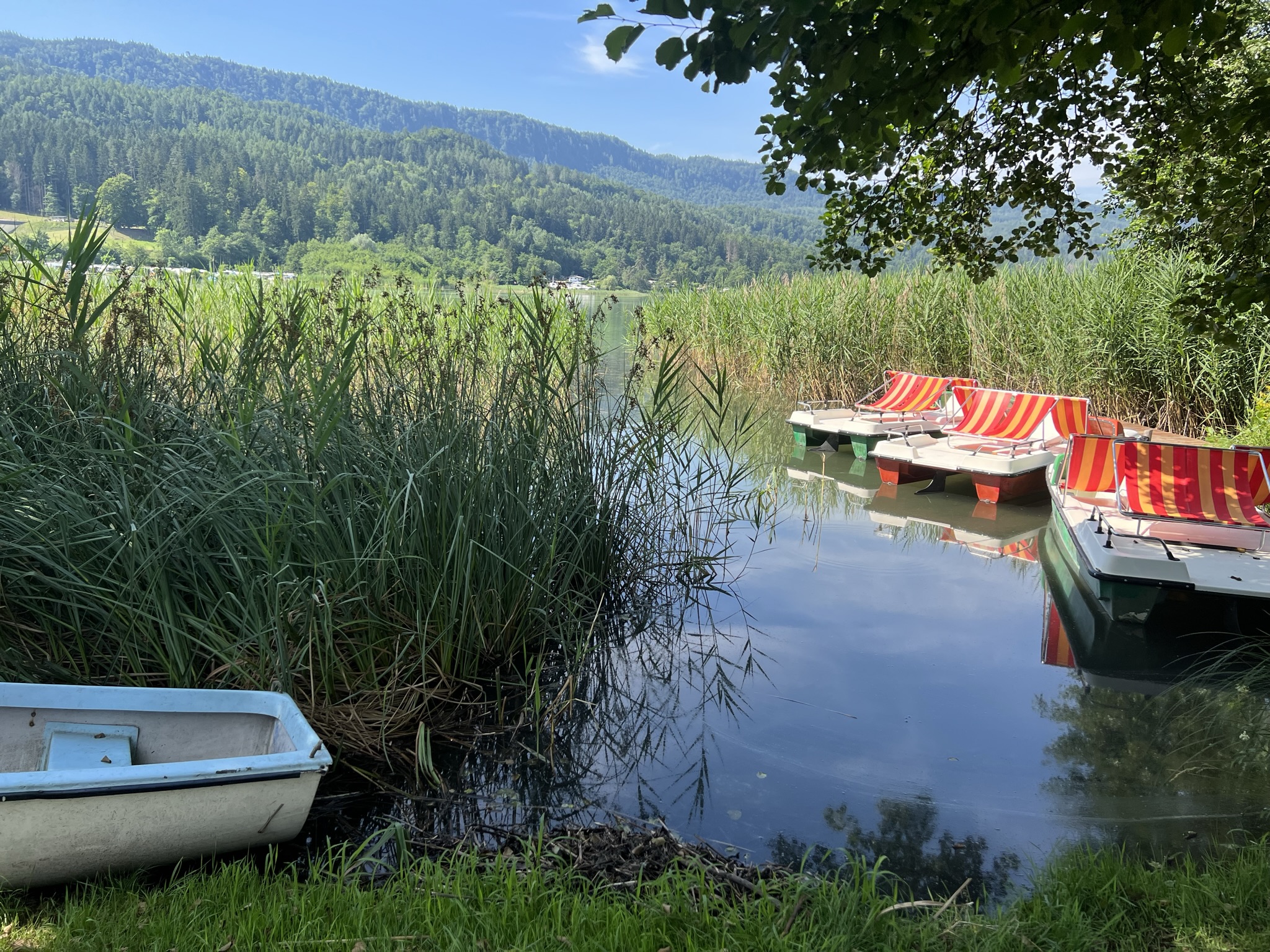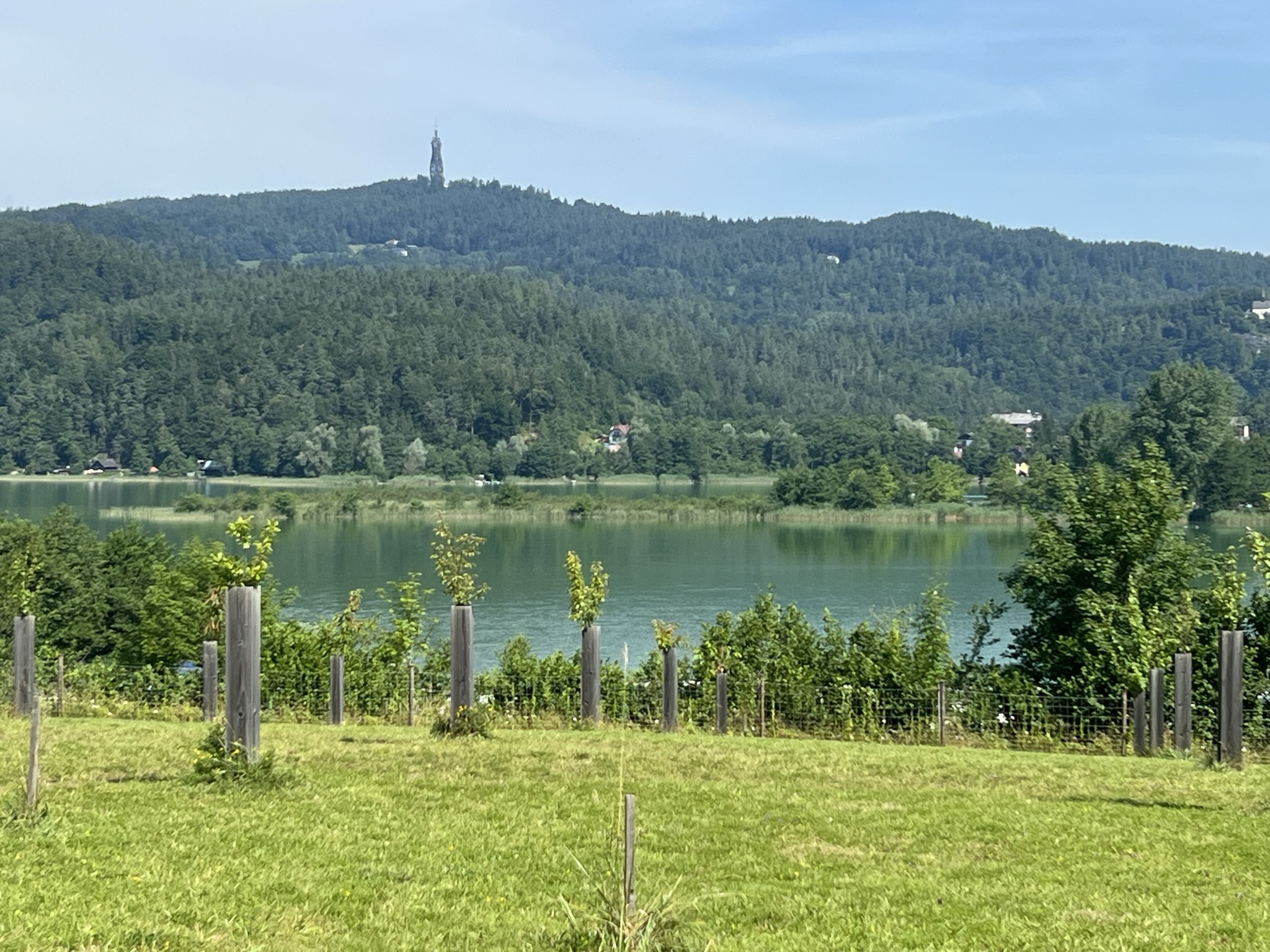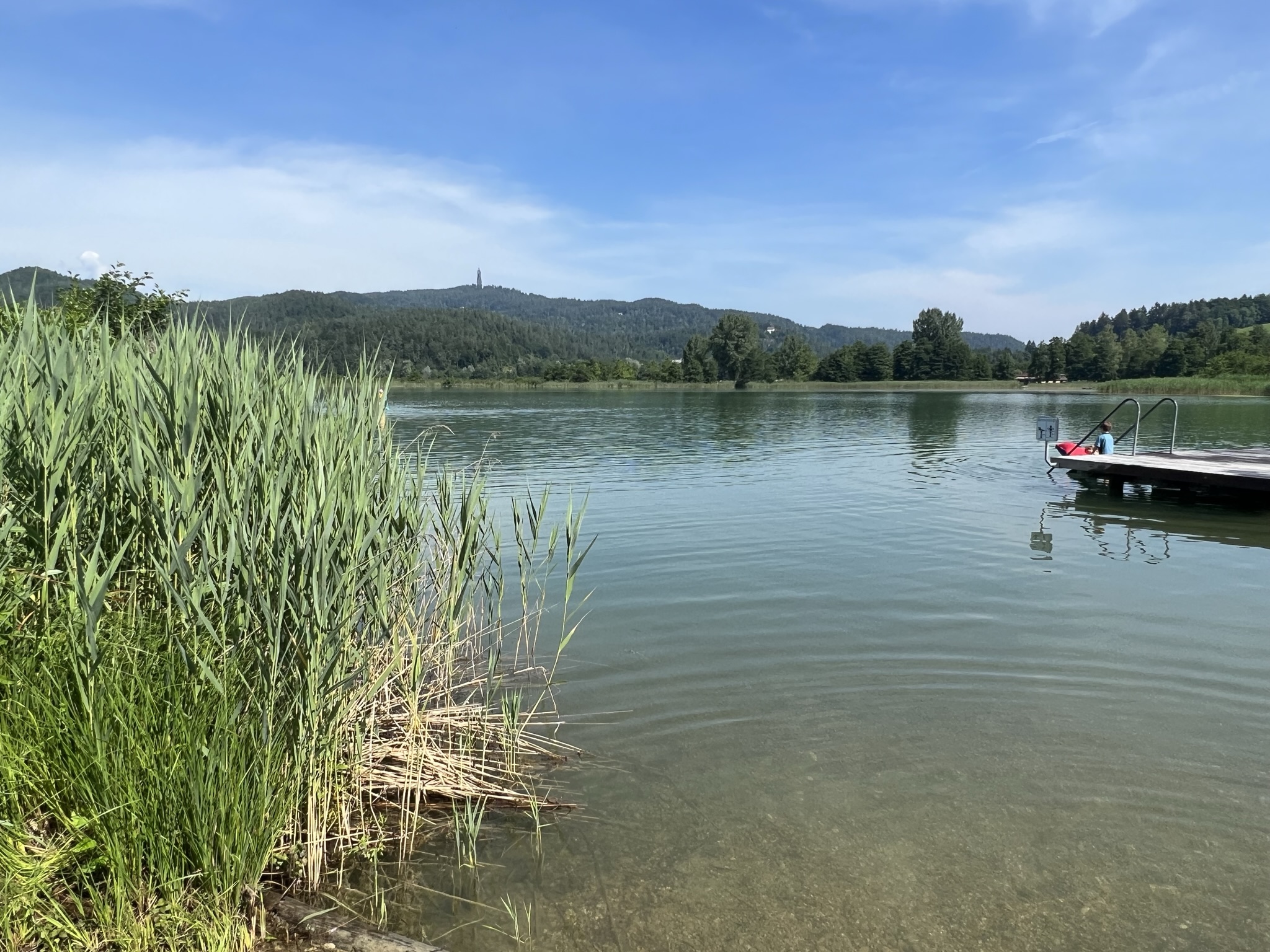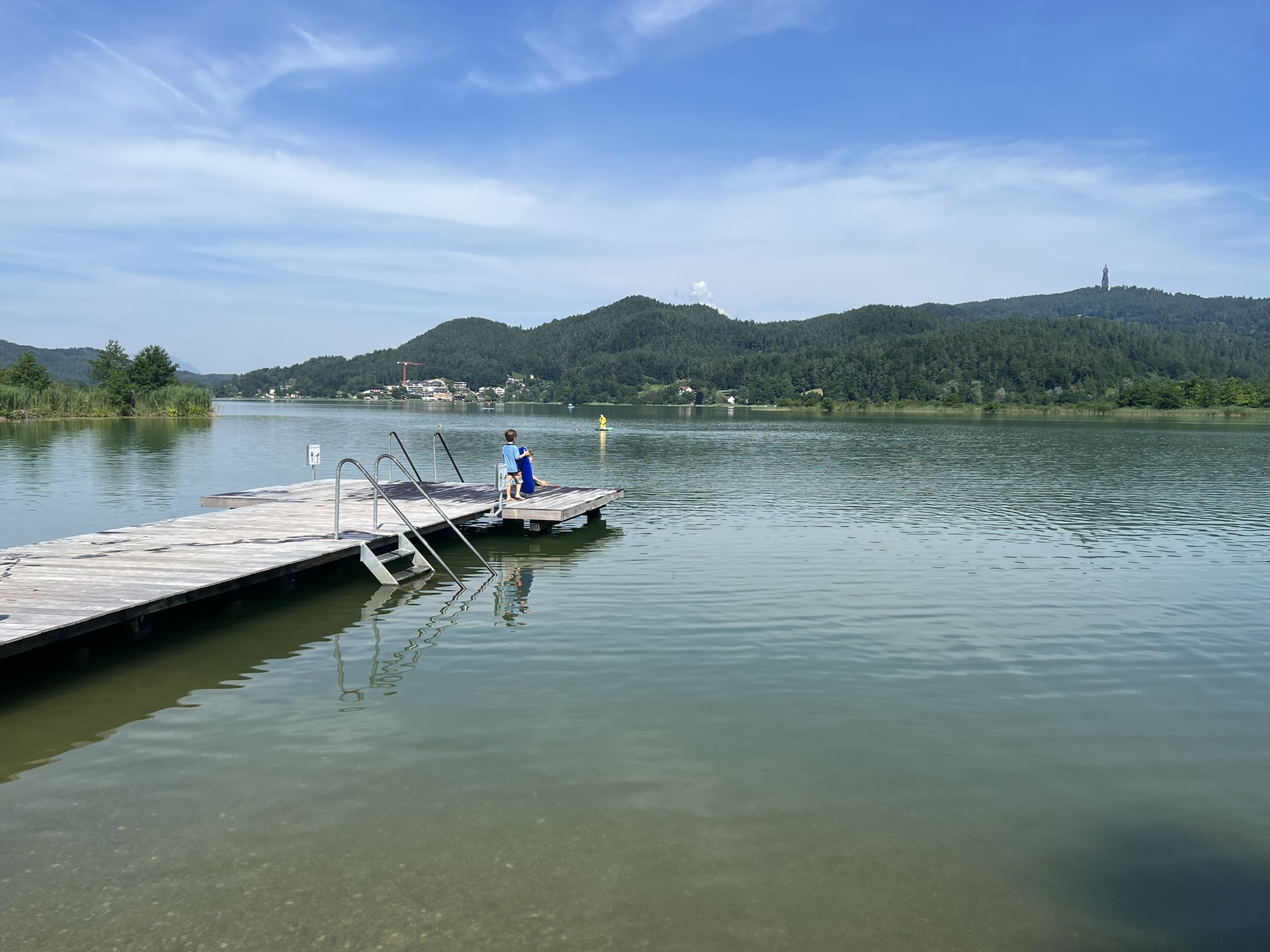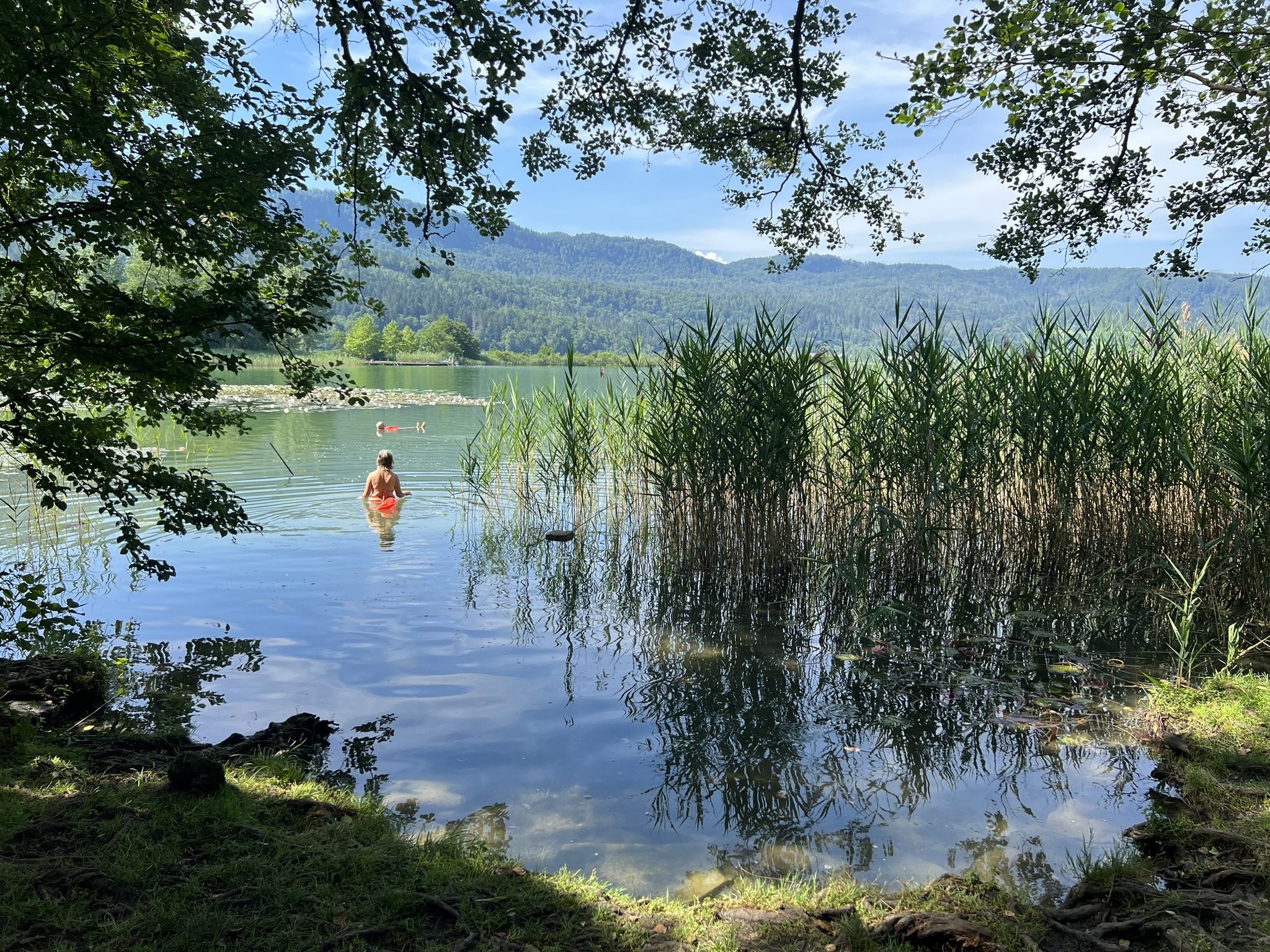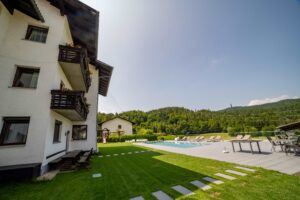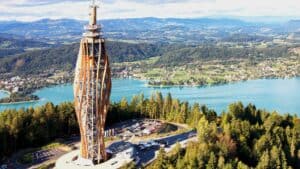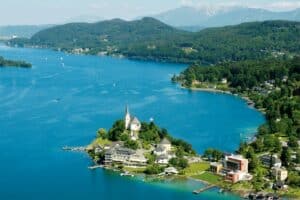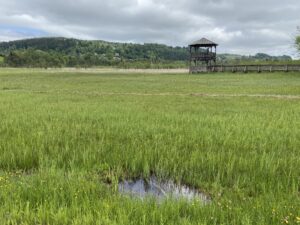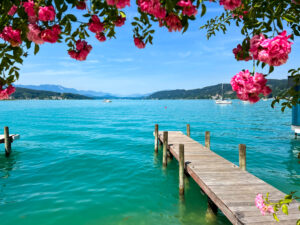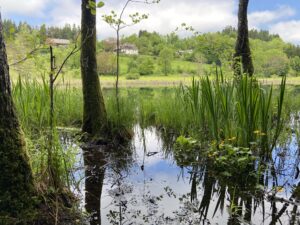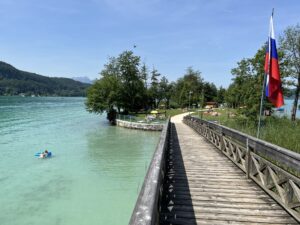Short Information:
- Where is Lake Keutschacher located? It is situated south of Lake Wörthersee in Carinthia
- What activities can you do at Lake Keutschacher? You can enjoy swimming, diving, sailing, windsurfing, fishing, hiking, cycling, playing tennis, and much more.
- Is there an entry fee? There are freely accessible areas and several beach resorts that charge a small entrance fee
General
Lake Keutschacher is located in a valley surrounded by the Karawanken mountains. It is easily visible from the Pyramidenkogel. With an area of 1.32 km², it is the sixth-largest lake in Carinthia, with a maximum depth of 15.6 meters. The water is clear and clean, inviting visitors for bathing, swimming, sailing, and fishing. The surrounding landscape is scenic and offers numerous hiking and cycling trails.
Lake Keutschacher is a popular alternative to Lake Wörthersee as it is also located in close proximity to Klagenfurt, but unlike the tourist hotspots along Lake Wörthersee, it is not as crowded. Many travelers have chosen Lake Keutschacher to enjoy its idyllic atmosphere and peaceful environment.
Temperature
The lake quickly warms up in spring and regularly reaches water temperatures of over 25 degrees Celsius in the middle of the lake. The shallower areas are even warmer. In winter, the lake regularly freezes over and often has a solid layer of ice from January to March.
Where can I go swimming?
The lake currently offers 23 free access points. Several beach resorts are scattered around the lake, such as Gerti’s Strandbad, Strandbad Felsennest, Strandbad Keuschnig, and Strandbad Petritz. Lake Keutschacher is especially popular among FKK enthusiasts, as the southern shore is known for its generous nudist area and is frequently visited by naturists.
Pile-Dwelling Settlement
A pile-dwelling settlement from the Neolithic period was discovered 6000 years ago on a shallow area in the lake. It was in use for about 300 years and is part of the oldest of four pile-dwelling periods in Central Europe. The piles were made from different types of wood, and the houses were built with log and wickerwork. The exact number of houses is unknown. Radiometric data from other findings suggest an origin between 4340 and 3780 BC.



